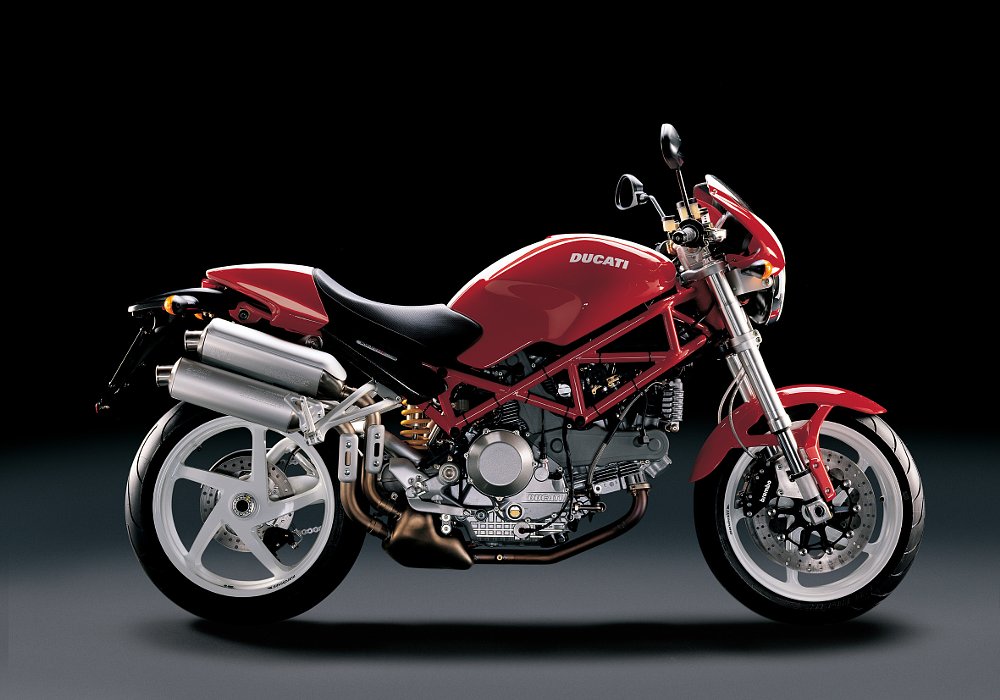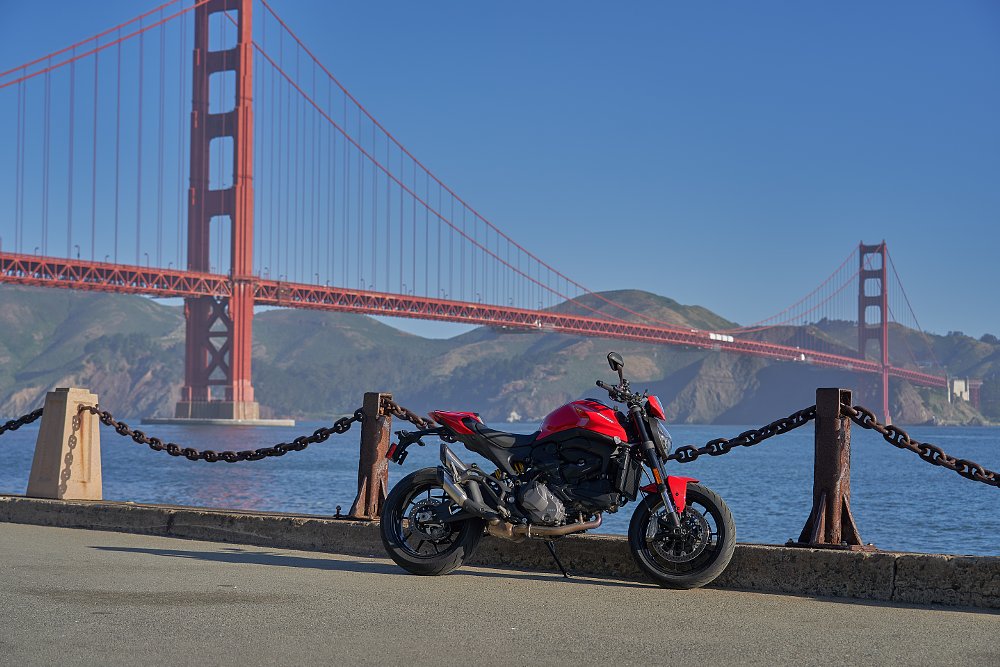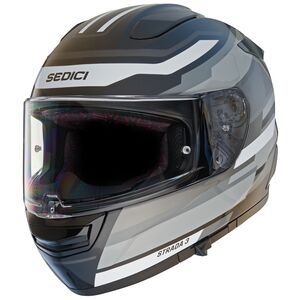When I was 25 years old, I was sure I wanted a Ducati Monster. I had moved to San Francisco six months prior. It was springtime, and I was finding my footing at a new job. Living in a new city and making new friends. It was time that I had a new motorcycle for the new me.
My sights were set on a Monster for a handful of reasons. It landed in 1993, when I was 9 years old and obsessed with motorbikes in a way that only kids can be. My dad always liked the Monster and I think I inherited that — the chassis of the 888 Superbike and the powerplant lifted from Ducati’s iconic 900SS, stripped of everything except basic motorcycling elements. It was parts-bin bliss, or so I was told.
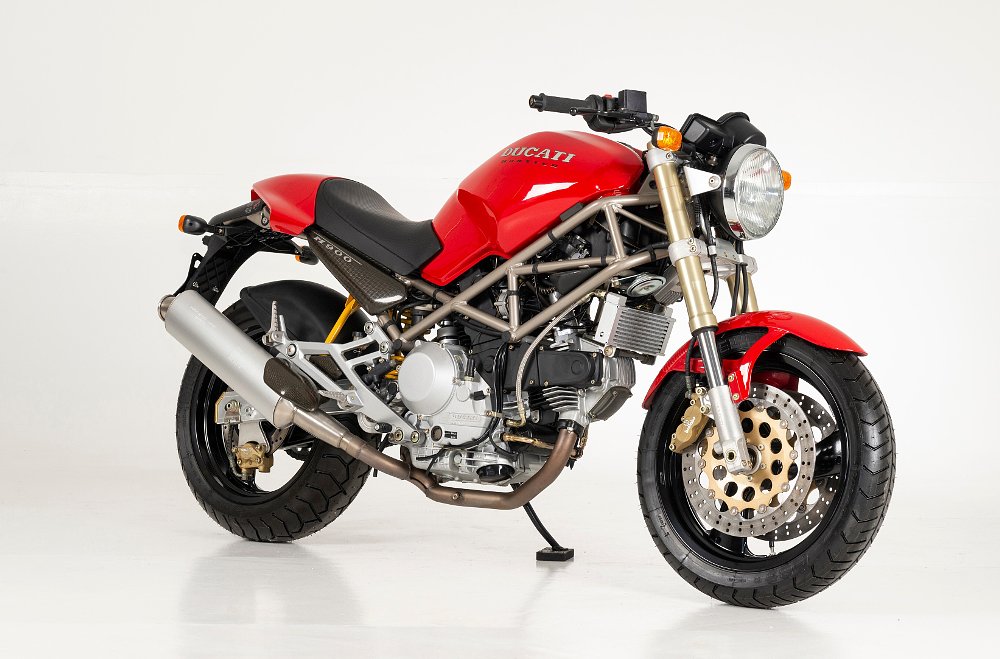
Around the time I got my driver’s license in the early 2000s, the Monster had progressed perfectly to stimulate my sophomoric taste. There was an S4 variant in 2001, powered by the same engine as the hallowed 916, which made me feel like my prayers had been answered. There was also an array of more average models that made an increasingly experienced, but financially immature, version of my motorcycling self believe that even I could be a Monster owner.
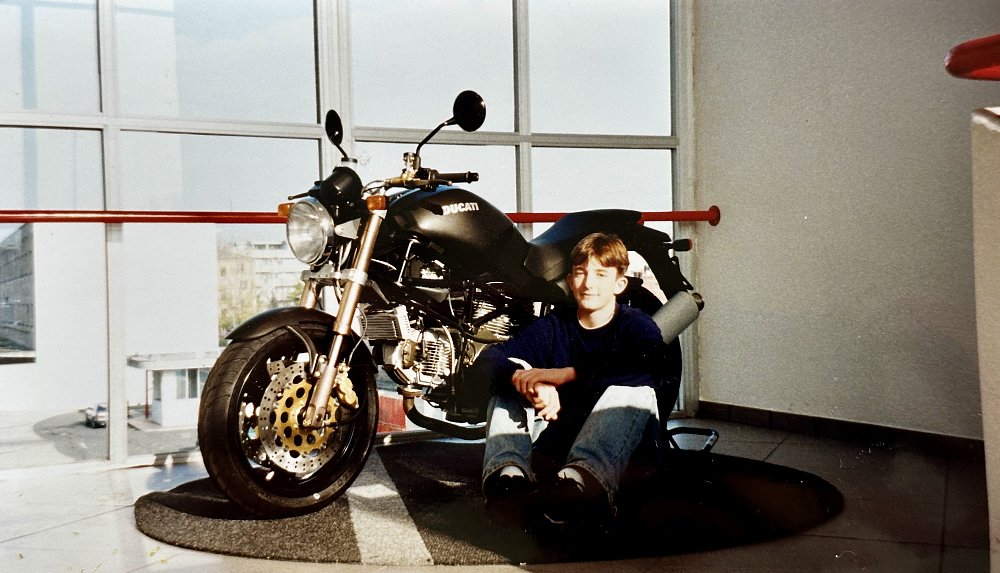
As the Monster tree sprouted more branches, from approachable to drool-worthy, my dream bike landed somewhere in the middle. It was the S2R, specifically, that hit me just right, even if it didn’t catch as much of the spotlight as the liquid-cooled Monster hot rods or even the simplistic and welcoming 620 model. The S2R was a Suzuki SV650 with more oomph on tap and real sex appeal, I thought, with either an 800 cc or 1000 cc powerplant.
From where I was sitting it was better looking than the Monster 1100 that had just landed, not to mention that a new 1100 in 2009 was on showroom floors with a sticker price of about $12,000. Too rich for me. My sights stayed on a used S2R, which held onto the classic lines and a lot of the minimalism that made the original bike such a hit. The added flair of a single-sided swingarm, shotgun-style exhaust, and off-center racing stripe didn’t hurt. What a looker. By the time I test rode the S2R 800 that I found on Craigslist, I was sold.
A Monster reborn
Almost exactly 15 years down the road from that beginning of my new life, I aim the newest version of Ducati’s Monster at the cliffs of Marin County just north of San Francisco. Of course, I’m 40 years old now, and my tastes have ripened, so it’s gotta be the SP version. Because I deserve fancy paint and mufflers. Also, Öhlins suspenders and a lithium battery that shave five pounds off the machine, a perfect counter to what I’ve gained in my midsection.
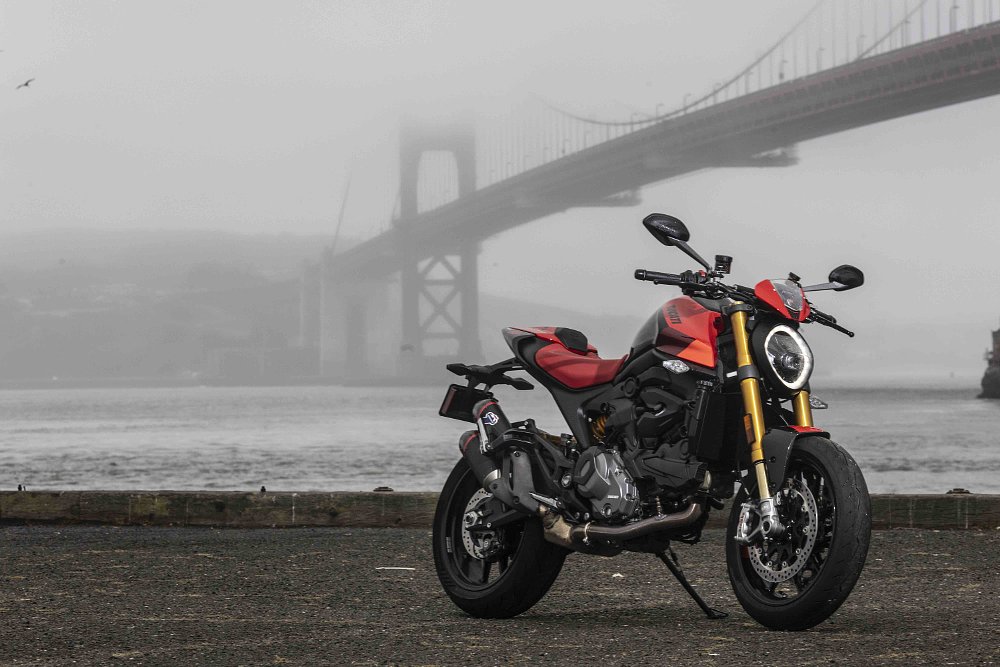
In many ways, this new Monster is completely different from the original. It has an aluminum front frame, Panigale-style, which connects the engine to the fork and leaves the swingarm to bolt to the back of the engine, and a composite subframe — no more iconic steel-tube trellis. Air cooling is long gone, in favor of more efficient liquid-cooled mills that burn cleaner and have been shared with other models. Some simplicity has drifted away, too, in favor of multiple levels of traction control, wheelie control, and throttle sensitivity, plus a full-color dash, and lean-angle-sensitive ABS.
When this new version of the Monster sprung from the loins of Bologna in 2021, it represented Ducati shaking the proverbial Etch A Sketch. Before this bike, the Monster lineup consisted of a 1200 and an 821 which used classic, steel frames and also each weighed more than 450 pounds. Like so many Monsters before, this one claims to be the lightest in the category. Along with the new quasi-frame, the engine is lighter than the old 821, as are the wheels and the swingarm. The result: just north of 400 pounds, says Ducati.
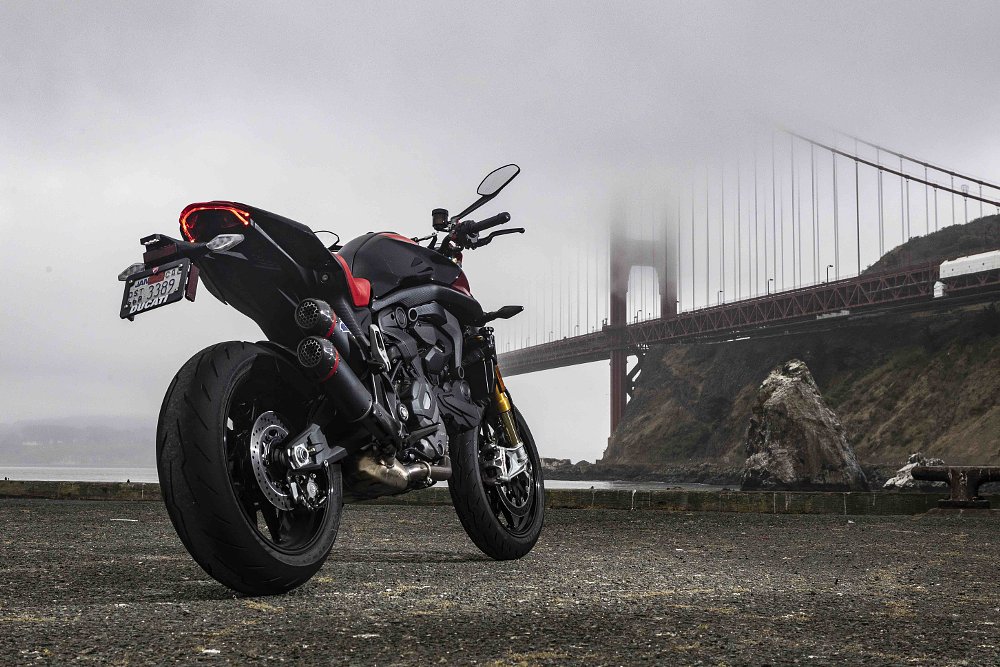
Taking a step back, the 2024 Monster is a sharp machine and has in common with the original Monster some of what has always made the bike special. It’s narrow at the waist and fairly compact as a package. It’s got a 900-sum’m cc engine that makes a bunch of torque and even more power. It pairs high-spec components with a minimalist design. It’s all meant to fit together, a mix of tradition and progress, to deliver a unique experience.
A ride rekindled
My first impression is that the bike feels small, almost 7/8ths sized, even with the SP version’s 33-inch high saddle being nearly an inch taller than the base Monster Plus. The engine jumps to life with approximately the same energy and clatter as a DesertX, Hypermotard 950, SuperSport, or Multistrada V2, all Ducatis that are powered by the 937 cc V-twin.
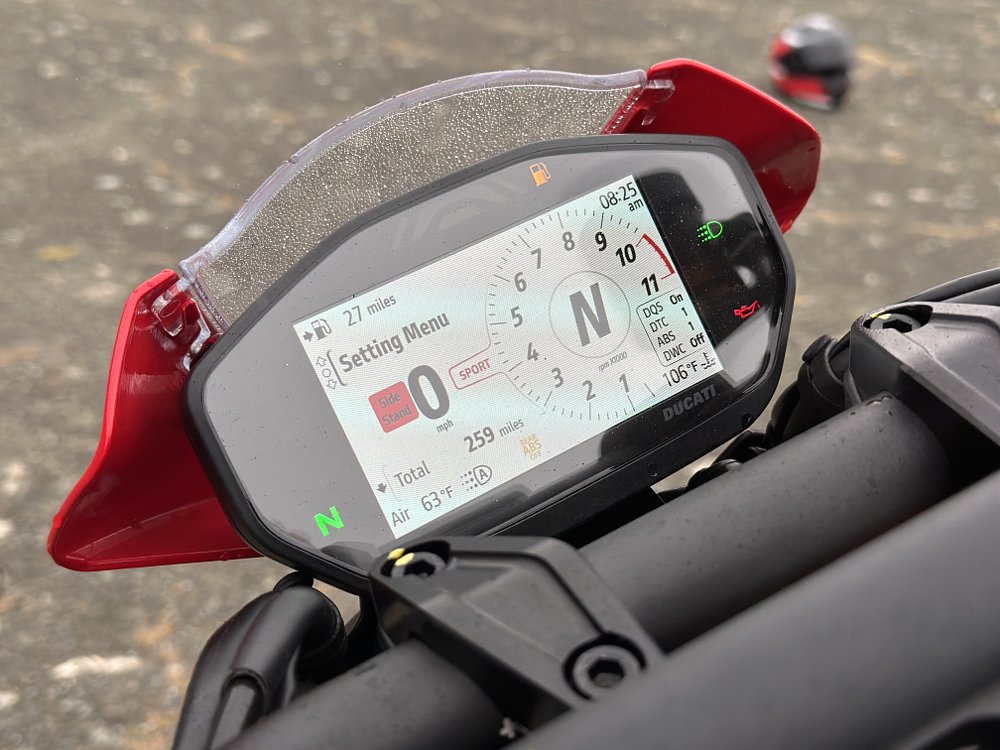
The TFT dash is familiar, too, the same unit used on other bikes and with a similar setup of fonts and menus. Switchgear and components, ditto. So, despite being a legend of many decades the latest Monster takes some cues from the original, in so much as it shares parts and mantras with its stablemates to make its own personality.
Out on the freeway, headed for some of my favorite roads, the bike is everything I want it to be. The seat foam is surprisingly supportive, considering the saddle looks like it was made by Mattel, and the whole machine is pretty smooth at cruising speed, sitting around 5,000 rpm at 75 mph. The fly screen above the headlight is about the size of a drink umbrella and provides exactly as much wind protection as a Ducati Monster should have: none.
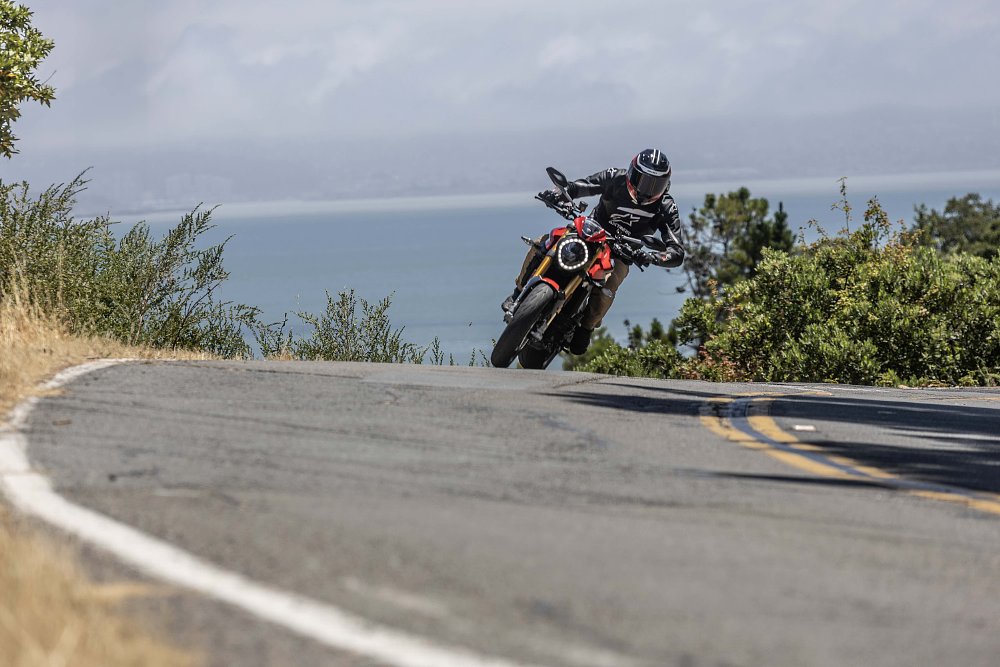
Crossing the Golden Gate Bridge early on this particular morning is wet and cold, with fog spinning and twisting around the giant towers. It’s not raining, but water runs off my face shield and across my chest. Like most big cities, there’s a gravity that pulls toward San Francisco — into the fray, among the people shuffling papers and chasing success. For motorcyclists, riding away from the city is the real draw. Thundering north, against the flow of headlights rushing toward the city, I get a feeling of levity. Refreshed by avoiding the tolls, literal and figurative, of city life.
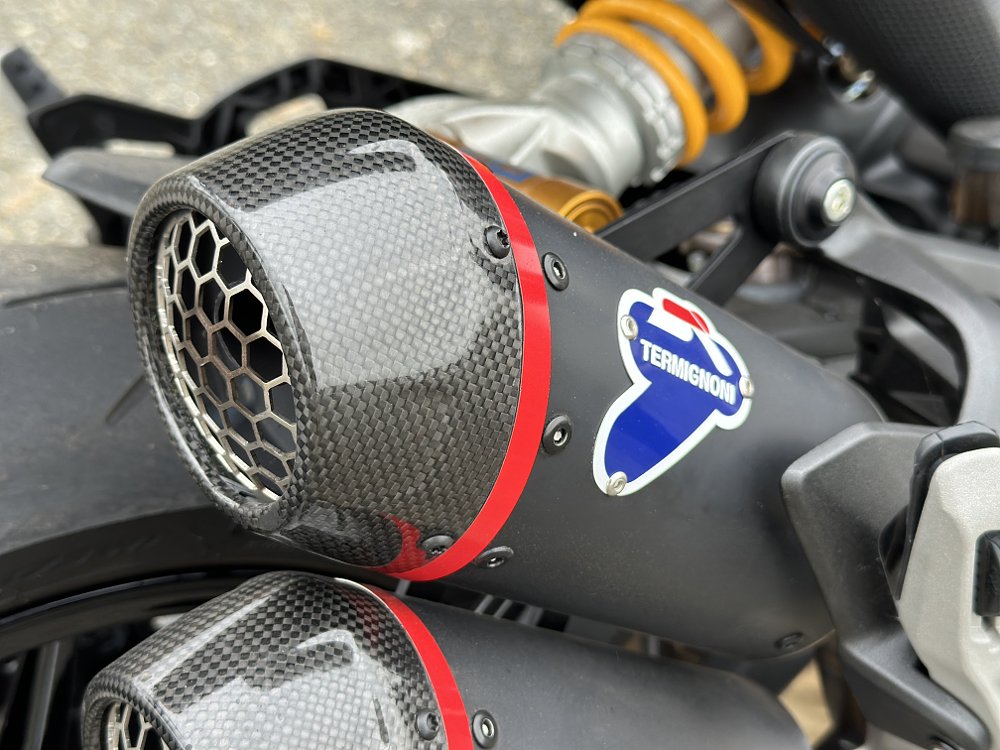
In the flash of a few miles I’m delivered from the freeway off ramp to rural lanes, and the fog burns away. The veil of mist hiding the treetops whips away dramatically as I dive into a labyrinth of roads trickling over and along the steep ridges of the Pacific Coast. The Monster reacts like a Labrador that’s been let off its leash at the park.
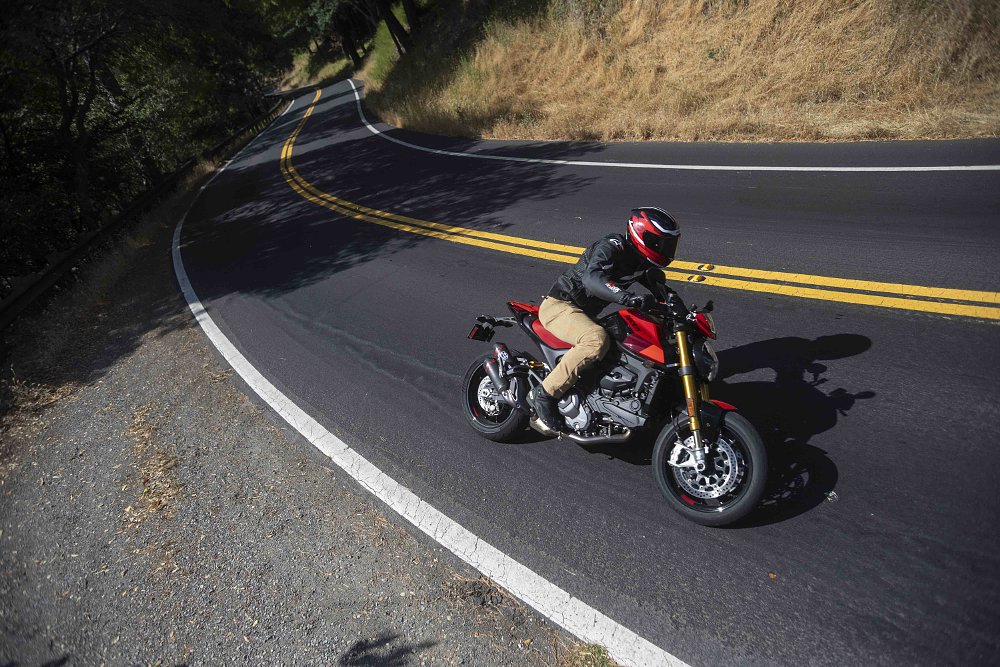
If you’re a habitual ride-mode changer this is where you’d flick the bike into Sport for a sharper throttle response. I prefer milder access to the bike’s 110 claimed horses in Touring mode. Never mind how aggressively you twist the grip, the Monster is very much at home on the extreme switchbacks and undulating crests of the coastal highways and byways.
Especially the SP, which has a steeper rake and a shorter wheelbase than the base bike, and the beautifully controlled damping of Öhlins suspension. On the highway the Monster SP is noticeably stiff, even for a 200-pound rider, but of course I forgive it once there’s some heat in the tires and the bike is swinging quickly from side to side. Then, it’s terrific.
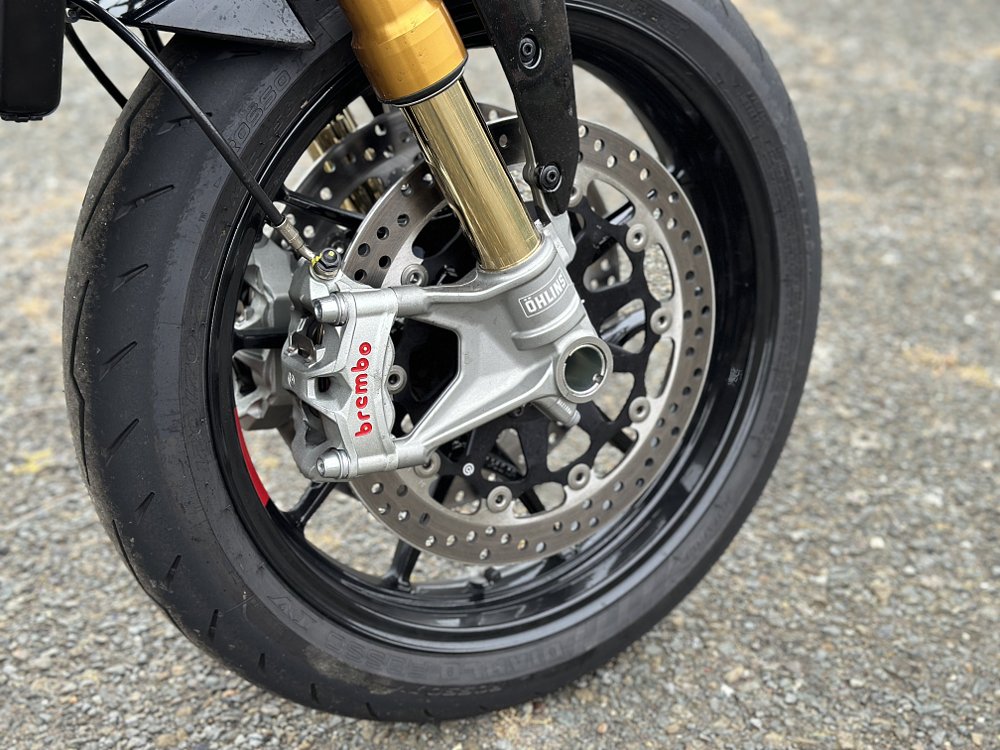
It doesn’t hurt that this area has some of my favorite sections of asphalt in the world. California’s famous Route 1, but also Muir Woods Road and Panoramic Highway, and the list goes on the farther north you ride. A forever-twisting stripe of pavement meanders through the forest, occasionally popping out into an expanse of sunbleached grassland or steep hillsides of hardy shrubs overlooking the ocean. Sometimes it weaves gently along a saltwater marsh, other times it dips under the canopy of a massive stand of redwoods, dripping with foggy residue.
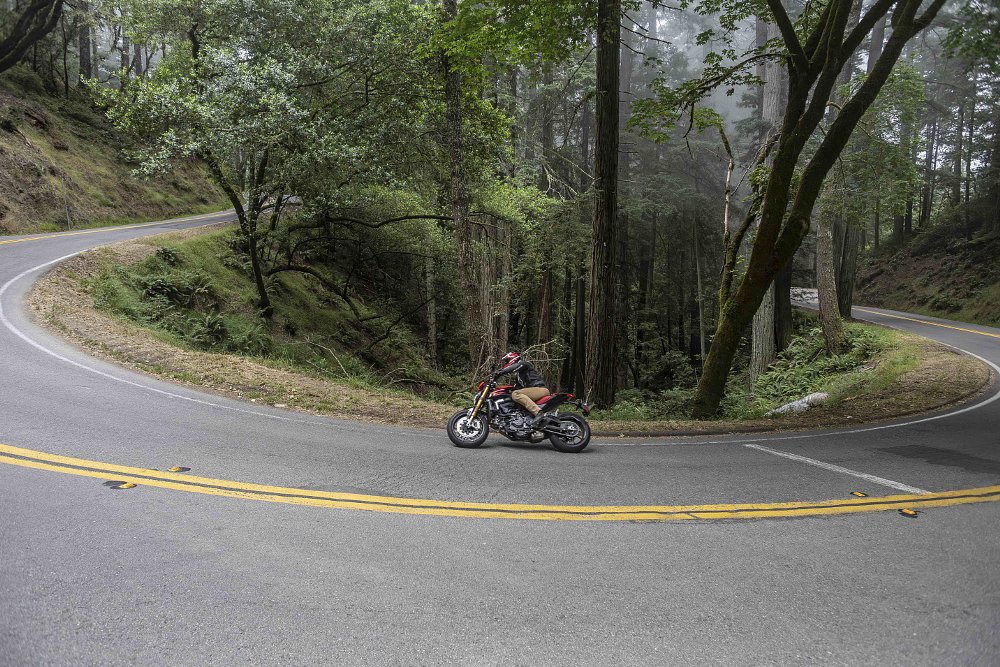
I do tend to turn down or shut off wheelie control, mostly because the bike never feels wild, though when the road gets shiny with water I’m thankful for the safety net of ABS and traction control. Even if this bike is more complex and shares less DNA with Monsters of yore, it sure has the feel of a machine that has evolved over 30 years. Throttle pickup is smooth and the chassis feels refined. At the same time, the exhaust burbles and barks threateningly and the transmission offers lots of solid, metal-on-metal feel.
The Monster is nothing if not eager for a ride like this. After about 110 miles the fuel light comes on and at first I ignore it — the fuel gauge is much more pessimistic than I am. At 140 miles the bike is claiming it’s only got 15 miles of range left, and I’m convinced to stop. Just as well, because my buns are getting tired of the seat and my eyes need a break from reading one corner entry after another.
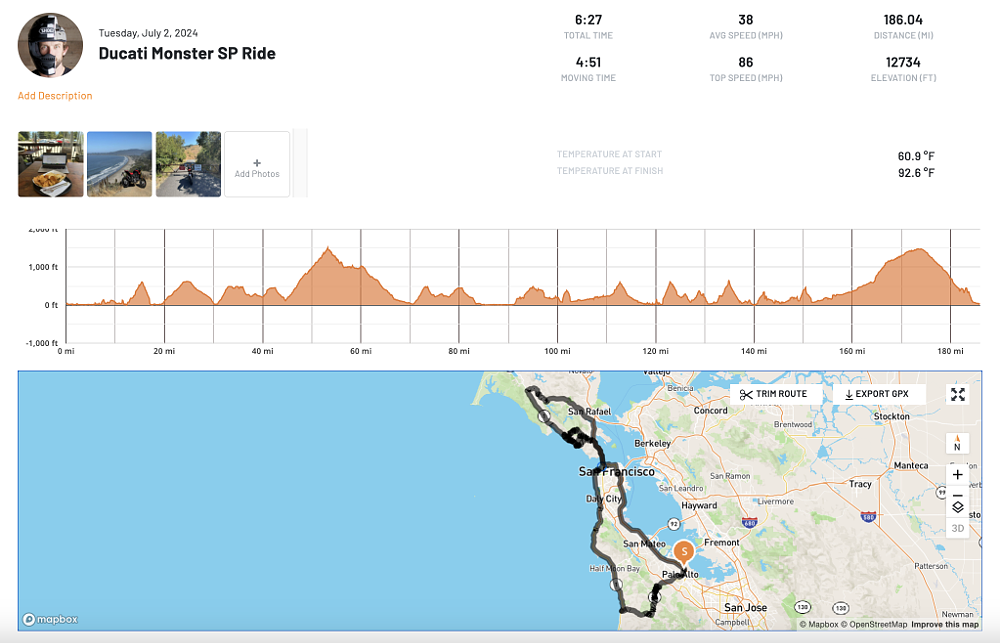
Where to go from here, that’s the question. Maybe back across The Big Orange Bridge and south along Skyline Boulevard. It’s hot today, so I opt for the coast, through Half Moon Bay and more panoramas of the Pacific. There are plenty of twists and turns that way, too, and the same tuna melt is waiting for me at Alice’s no matter which route I take. The Monster will deserve a break to peacock in the parking lot by then, anyway.
Revisiting the fork in the road
Settling into San Francisco in my 30s, slowly climbing my way through more lucrative tech-industry jobs, navigating dating heartbreak, and eventually nesting in a lovely home overlooking the Bay, it’s the bike I deserve.
Or it would have been, if I had done any of that.
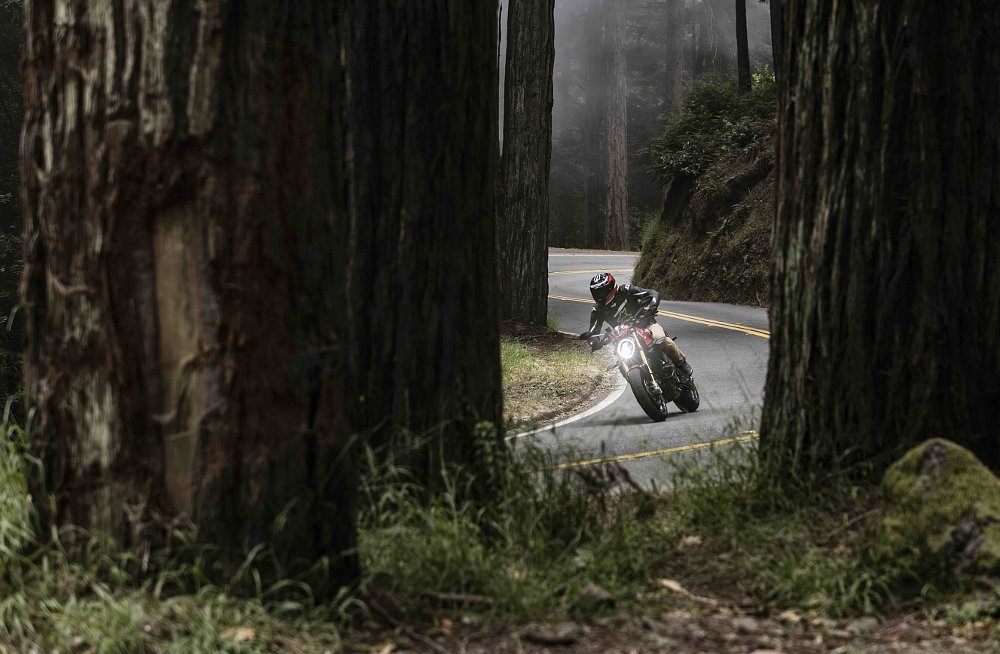
I never got that used Monster S2R of my dreams, and I never experienced the pride or struggle of Ducati ownership. I bought a KTM instead, and a few years later moved to Los Angeles. This ride was just a window into the motorcycling life I might have had, and where the bike I once so badly wanted ended up eventually.
The Monster’s journey has been interesting, including everything from gateway bikes to unruly, fire-breathing supersport slayers. The current Monster seems to be attempting both — theoretically, an approachable entry into Ducati sport bikes with a $13,000 price tag and the lure of a 30.5-inch seat height, but also this SP for nearly $16,000. It transmits many feelings at once. Fast, but not overwhelming. Evolved, but a little bit raw. Accessible, but special.
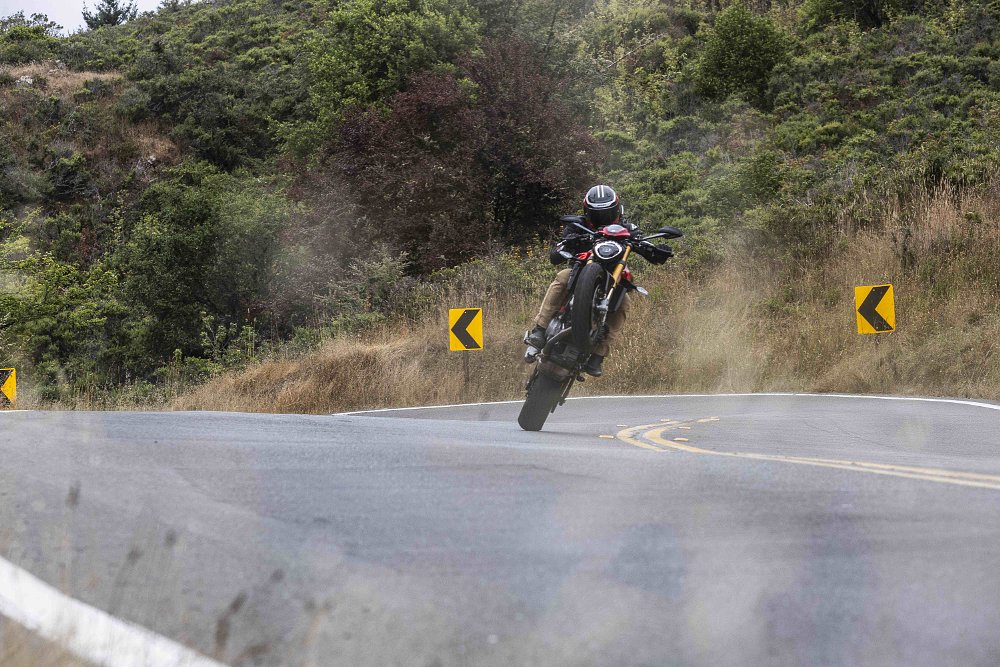
As distant as it is from its ancestors, I appreciate that Ducati doesn’t shy away from crumpling up some of its tradition and sketching out new ideas. I’m getting old enough that I miss the finned cylinders and geometric frames of yesteryear, but I’m not sure what I’d change about this bike, considering the constraints of our day and age.
Like anyone content in their life, I wouldn’t change my own trajectory either. If I did, it wouldn’t be for the jobs, the relationships, or the rest of the life I could have had. If anything, it would be for the roads around San Francisco. What a place to enjoy a motorcycle, especially Ducati’s famous Monster.
| 2024 Ducati Monster SP | |
|---|---|
| Price (MSRP) | $15,695 |
| Engine | 937 cc, liquid-cooled, eight-valve, 90-degree V-twin |
|
Transmission, final drive |
Six-speed, chain |
| Claimed horsepower | 111 @ 9,250 rpm |
| Claimed torque | 69 foot-pounds @ 6,500 rpm |
| Frame | Aluminum twin-spar |
| Front suspension | Öhlins NIX30 43 mm fork, adjustable for spring preload, compression and rebound damping |
| Rear suspension | Öhlins shock, adjustable for spring preload, compression and rebound damping |
| Front brake | Dual Brembo Stylema four-piston calipers, 320 mm discs with ABS |
| Rear brake | Brembo two-piston caliper, 245 mm disc with ABS |
| Rake, trail | 23.0 degrees, 3.4 inches |
| Wheelbase | 57.9 inches |
| Seat height | 33.1 inches |
| Fuel capacity | 3.7 gallons |
| Tires | Pirelli Diablo Rosso IV; 120/70ZR17 front, 180/55ZR17 rear |
| Claimed wet weight | 412 pounds |
| Available | Now |
| Warranty | 24 months, unlimited miles |
| More info | ducati.com |





